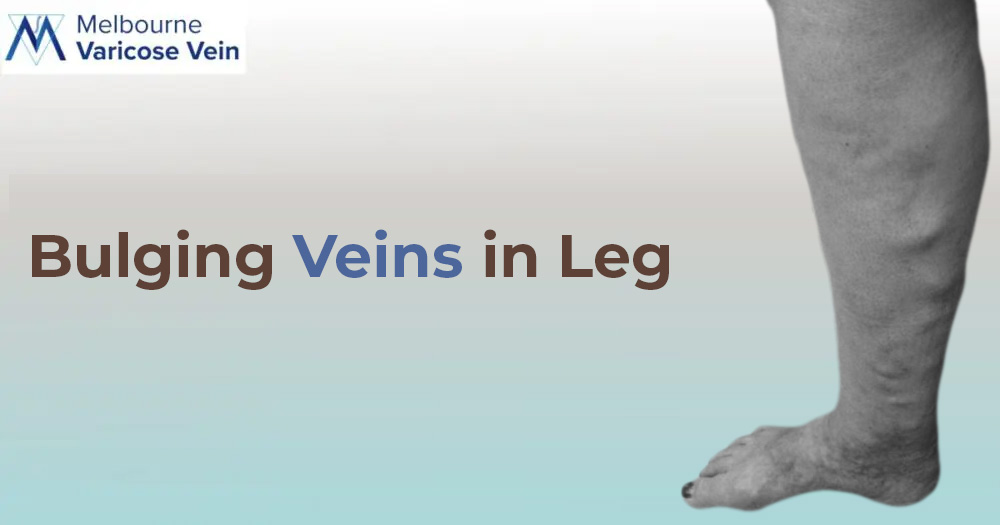
30% of adults have varicose veins or unattractive bulgy veins in legs. Weak one-way valves in the veins cause varicose veins to develop beneath the skin, leading to blood flowing backwards.
When the valves fail, they strain the vein walls, resulting in the expansion and formation of varicose veins. When the valves don't function properly, blood pools and widens the veins, causing them to bulge.
Obesity, inactivity, pregnancy, and aging are common causes of this condition.
Obstructions in the vein's blood flow can also cause bulgy veins in leg, potentially leading to thrombophlebitis, inflammation, and swelling.
Some women experience bulgy veins during pregnancy due to increased pressure on the leg veins caused by the uterus. Age-related vein enlargement is another symptom where veins weaken and lose flexibility with age, leading to swelling and growth due to accumulated blood.
What are the other symptoms associated with bulgy veins in leg?
Bulgy veins may be accompanied by additional symptoms depending on the underlying disease or condition. These symptoms may also affect other body systems.
Bulgy veins in leg can coexist with symptoms or conditions affecting other body systems such as:
How to Treat Veins in Legs
Minimally invasive procedures take less than an hour, and you can resume your regular activities immediately, except for strenuous activities. Compression stockings should be worn. Surgical treatments like ligation and stripping may require up to 4 weeks for full recovery. Now that you're aware of the treatment options for varicose veins, consider taking the first step.
Surgery used to be the primary treatment for varicose veins, but now there are less invasive options with better success rates, shorter recovery times, less pain, and fewer side effects. However, surgery still has its place in certain circumstances.
Sclerotherapy: Injecting a liquid or foam into bulging veins turns them into scar tissue, sealing them off and redirecting blood flow to healthier veins. The scarred varicose vein will eventually be absorbed by the body. Sclerotherapy can be guided by ultrasound for deeper veins or directly for visible superficial veins.
Endovenous Ablation: Applying heat to the vein's interior using laser or radio-frequency waves through a catheter causes the vein to close off and dissolve over time.
Microphlebectomy: Creating small incisions over the varicose veins and using a special tool to remove them.
Cyanoacrylate or Medical Glue: Inserting glue into abnormal veins under ultrasound guidance to fuse the vein walls together. Glue is suitable for certain varicose veins.
If you're interested in treating your varicose veins with a minimally invasive procedure, schedule a consultation with Dr. Yazdani, a highly experienced vein doctor specializing in minimally invasive techniques for treating varicose veins.

